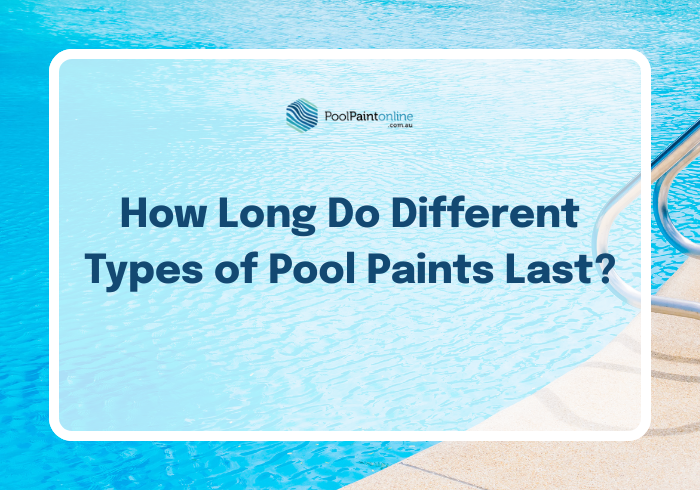
How Long Do Different Types of Pool Paints Last?
Share
Why Pool Paint Longevity Matters
Painting your pool is an investment — not something you want to redo every couple of summers. The type of pool paint you choose has a big impact on how long your finish lasts, how much maintenance it needs, and how often you’ll need to recoat.
In Australia’s tough climate, Luxapool® paints are trusted for their long-term durability, UV resistance, and vibrant finishes. But how do different types of pool paints compare when it comes to lifespan? Let’s break it down.
Epoxy Pool Paint: The Long-Lasting Performer
If longevity and durability are your priorities, epoxy pool paint is the clear winner.
Typical lifespan: 7–10 years (with proper surface preparation and maintenance)
Epoxy paint forms a hard, high-gloss surface that’s resistant to:
- Chlorine, saltwater, and pool chemicals
- UV exposure and fading
- Algae growth and staining
- Abrasion and surface wear
It’s the best choice for bare concrete, fibreglass, pebblecrete, or marblesheen pools. While the initial preparation is more intensive, the long lifespan and minimal maintenance make it a smart long-term investment.
👉 Learn more on our Epoxy Pool Paint Page.
Chlorinated Rubber Pool Paint: Easy to Apply, Shorter Lifespan
For a simpler, DIY-friendly option, chlorinated rubber paint offers easier application and faster recoating times — but with a shorter life expectancy.
Typical lifespan: 3–5 years
Chlorinated rubber paint provides good resistance to:
- Pool chemicals and saltwater
- Mild abrasion and algae growth
However, it’s best suited for pools that have already been coated with chlorinated rubber. This type of paint can’t be applied over epoxy, and while it’s easier to maintain, it will need more frequent recoating over the years.
👉 Explore details on our Chlorinated Rubber Pool Paint Page.
Other Factors That Affect Pool Paint Lifespan
Even the best paint won’t last long if the surface isn’t properly prepared or maintained. Here are key factors that influence durability:
- Surface preparation: Clean, dry, and properly repaired surfaces ensure strong adhesion.
- Weather during application: Avoid painting in extreme heat, humidity, or rain.
- Chemical balance: Maintaining correct pH and chlorine levels prevents paint degradation.
- Curing time: Allow full curing before refilling — typically 7 days for epoxy and 5 days for rubber.
- Regular cleaning: Gentle brushing and balanced water chemistry keep the surface looking fresh.
How to Tell When It’s Time to Repaint
Signs your pool may need a fresh coat include:
- Fading or chalking colour
- Rough, dull surface texture
- Peeling or flaking paint
- Visible cracks or stains that don’t clean off
If you notice these, it’s likely time to prepare the surface and recoat with a new layer of paint.
The Bottom Line
|
Paint Type |
Typical Lifespan |
Best For |
Key Benefits |
|
Epoxy |
7–10 years |
Bare concrete, fibreglass, pebblecrete |
Long-lasting, high-gloss, chemical-resistant |
|
Chlorinated Rubber |
3–5 years |
Previously painted rubber-based pools |
Easier application, quick drying |
Want a Long-Lasting Pool Finish?
If you want a pool coating that stands the test of time, Luxapool® Epoxy is the gold standard. But if you’re refreshing a previously rubber-painted surface, Luxapool® Chlorinated Rubber provides a simple, reliable solution.
👉 Visit the Epoxy Pool Paint Page or the Chlorinated Rubber Pool Paint Page to explore your options and find the perfect product for your pool.

